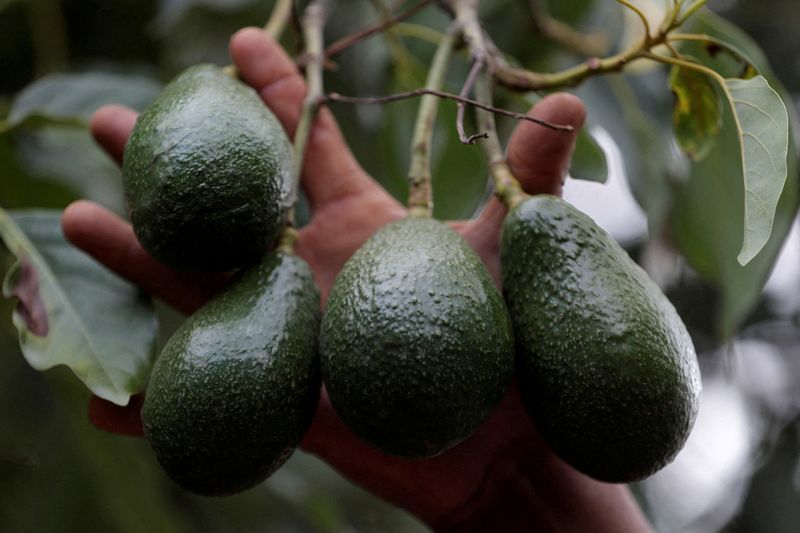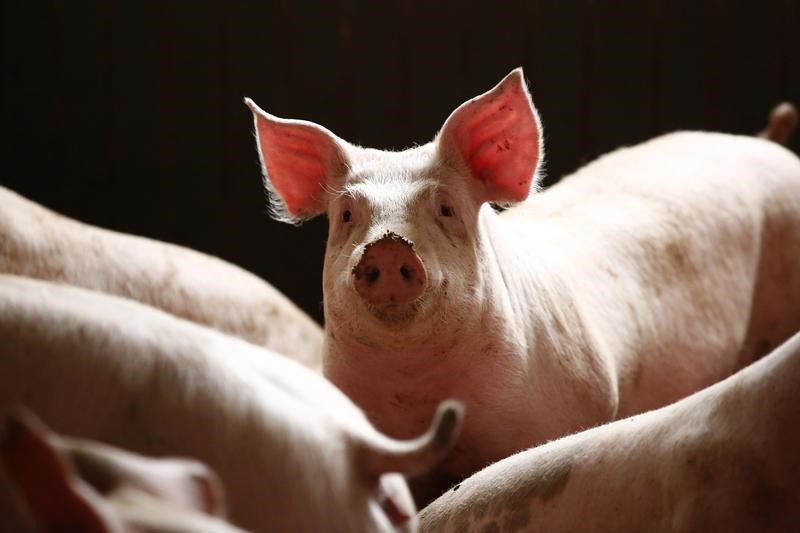By Leah Douglas and Ed White
WASHINGTON/REGINA, Saskatchewan (Reuters) -U.S. prices could rise next year for avocados, strawberries and other fresh produce, and consumers could face shortages if President-elect Donald Trump follows through with plans to impose tariffs on goods from Mexico and Canada. So say agricultural economists and industry executives.
Mexico and Canada are by far the two largest suppliers of agricultural products to the United States, with agricultural imports valued at nearly $86 billion last year, according to data from the U.S. Department of Agriculture and U.S. Customs.
Duties on their food shipments could cause shocking financial and operational ripple effects on U.S. supplies and highlight how dependent the country has become on its neighbors to feed its population, economists said.
Trump said Monday that on his first day in office in January he would sign an executive order that would impose a 25% tariff on all products entering the United States from Canada and Mexico to curb the flow of illegal drugs and migrants into the US.
U.S. consumers would feel the impact at grocery stores and restaurants as items go out of stock, Lance Jungmeyer, president of the Fresh Produce Association of the Americas, said Tuesday.
“We would generally see fewer items in the produce section,” Jungmeyer said. “Restaurants should reconfigure their menus, perhaps by using fewer fruits and vegetables or reducing portion sizes.”
According to the USDA, about two-thirds of all U.S. vegetable imports and half of fruit and nut imports come from Mexico: nearly 90% of avocados, as much as 35% of orange juice and 20% of strawberries.
According to U.S. trade data, avocado exports to the United States have increased 48% since 2019 as consumers increasingly add them to salads and sandwiches. The U.S. market accounts for about 80% of total Mexican avocado exports, USDA data shows, a transaction worth $3 billion last year.
“It would create an inflationary spiral,” said Alfredo Ramírez, governor of Michoacan, Mexico’s top avocado-producing state.
“Demand is not going to drop,” he said. “What would increase are costs and prices. This would mean an increase in inflation and have direct consequences for consumers.”
Margarita stocks could also be affected. Beer and tequila imports together accounted for nearly a quarter of Mexican agricultural imports into the US last year. U.S. imports of Mexican tequila and mezcal — both used to make cocktails such as margaritas — totaled $4.66 billion in 2023, up 160% since 2019, according to data from the Distilled Spirits Council of the United States .
“Tariffs on spirits from our neighbors to the North and South will harm American consumers and lead to job losses in the American hospitality industry just as these companies continue their long recovery from the pandemic,” the group said.
The tariffs could also drive up prices for fertilizer imported from Canada, at a time when farmers are paying nearly 50% more for fertilizer than in 2020, said Sam Kieffer, vice president of public policy for the American Farm Bureau Federation, a trade group for farmers.
“Now is not the time to send shockwaves through the agricultural economy,” Kieffer said.
PIGS, CATTLE MIGRATION
Trump’s plan could also slow the migration of more than 1 million cows exported across the border annually by Mexico to become part of the U.S. beef supply.
U.S. producers have reduced their herds in recent years, causing beef prices to rise. They could benefit if tariffs lead to fewer cattle and beef imports, said Bill Bullard, CEO of the Ranchers Cattlemen. Action (WA 🙂 Legal Fund United Stockgrowers of America.
Tariffs could also further increase meat prices for U.S. consumers, although Bullard said importers and meat processors may be able to absorb some additional costs.
“We’re looking forward to tariffs,” he said. “It will help level the playing field for our domestic producers.”
In the North, tariffs could also disrupt shipments of beef, dairy cattle and hogs between the U.S. and Canada, potentially impacting producers in both countries.
Manitoba alone sends about 3 million piglets each year to producers in Iowa, Minnesota, South Dakota and Nebraska, where feed corn can be sourced more cheaply, according to the Canada Pork Council and Manitoba Pork Council.
Midwestern farmers then raise and fatten the animals in their feedlots before sending them to slaughter – and the pork flows to buyers in both the US and Canada after processing.
TRUMP TRADE WARS 2.0
The latest USDA projections show that the U.S. will likely have an agricultural trade deficit of more than $42 billion by 2025, driven in part by consumer interest in out-of-season produce and imported alcohol from Mexico.

The threat of tariffs could be a way to exert leverage on Mexico and Canada ahead of renegotiations of the USMCA trade deal, which will be reviewed in 2026, said Peter Tabor, a lawyer and senior policy advisor at Holland & Knight and a former USDA trade official.
But the introduction of steep tariffs over time could mean the U.S. could be seen as an unreliable trading partner and importers of U.S. goods would look elsewhere to fill the void, Tabor said.


